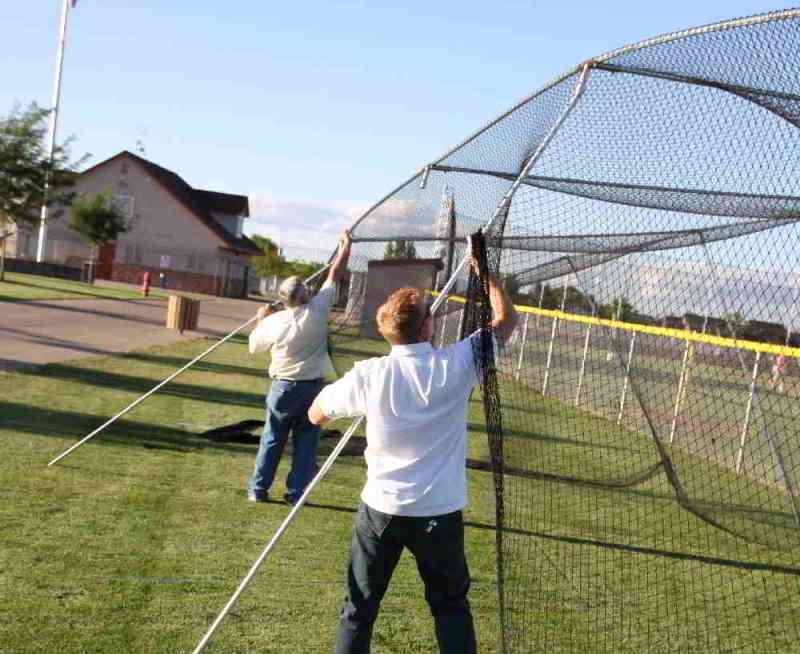 Tips on buying a batting cage
Tips on buying a batting cage
Years ago it was pretty much out of "regular" folk's budget to own a batting cage. They ran anywhere form $2500-3500. They were permanent, with concrete to pour and a very heavy structure to install. Not so today. Furthermore they are more affordable then ever. But as with all major purchases let's consider the famous Latin phrase - caveat emptor: Let the buyer beware. You can get cheap batting cages today. Somewhere in the neighborhood of $300-400. But I would not consider them too long. Also as the other famous saying goes, "You get what you pay for." The netting is generally cheap and weak and most likely will wear out in less than a year.
Netting
The netting is the single most important part of the cage. Good netting will last a long time and give you years of enjoyment. Cheap netting will lead to frustration and disappointment. There are many types of netting on the market today, HDPE - High density polyethylene, poly net, knotless poly, knotless nylon, knotted nylon, and the list goes on. Netting is also sold on the diamond and on the square. Tenacity is another aspect of the netting. The higher the tenacity the better the net. You also want a net that has been both water and UV protected. A lot of manufacturers put nylon net, which starts out white, through a "dipping" process that adds a UV inhibitor and a water repellent. I say "dipping" since there are many ways now that manufacturers prepare their net. Some actually put it in vats after it has been run through their sewing machines. Some process the twine first before running it through their machines. Some pressurize it. After this, the netting can be quite stiff as the more "dip" the stiffer the net becomes. It generally softens up in the sunlight and relaxes. Some nets are very supple and easily manipulated. Some netting manufacturers sell netting in bulk to batting cage manufacturers, like us, while others make and sell their cages directly to the public. It turns out a lot of netting manufacturers are on the east and west coast and the gulf. The reason is most of them started out as fish net companies. Many of them got into the sports netting business to balance out their seasonal fishing business.
What we sell
We only sell knotted nylon on the diamond. It is treated both for UV and water. The tenacity is 9 or higher. This is a very good quality net. It will last for years. We sell both a #21 and #36. The number #21 has a burst strength of about 209 pounds per strand. But sine no one ever hits a single strand, it has a burst strength of 836 pounds per mesh. This has proven plenty strong for backyard family use. We also sell a #36. This has a burst strength of 380 pounds per strand or 1520 pounds per mesh. While quite a few families have bought this net, it generally is for high schools and colleges, where a lot of players use it all day long. Since netting manufacturers sell netting by the pound, and the #36 is quite a bit heavier per square foot than #21, the #36 is quite a bit more expensive, on the order of $300 more per cage.
Next time...
We'll discuss more ideas for a batting cage, what to look out for when buying, what questions to ask, and what you can expect to pay.

 Tips on buying a batting cage
Tips on buying a batting cage
Leave a comment